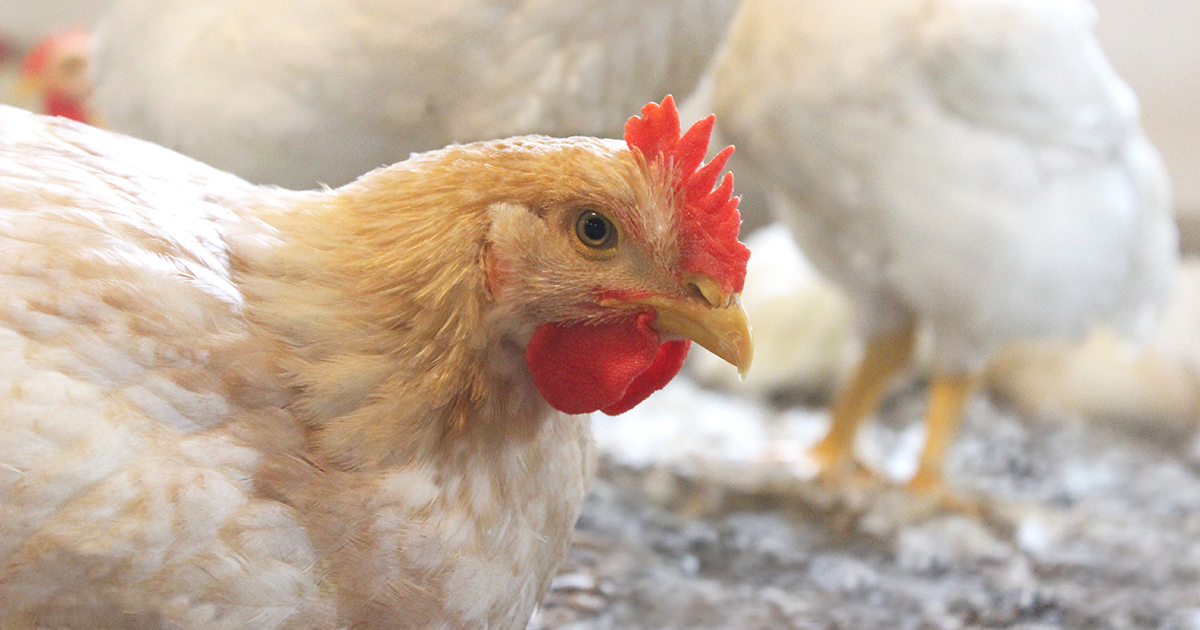
The European Chicken Commitment
For us, at Bjärefågel, it is important to constantly work on improving the conditions for our chickens. If we see an opportunity for positive change for the chickens, then we make a change. As a step in this, we base our goals on The European Chicken Commitment, which we are working towards joining.
Ever since we started breeding chickens, our birds have had plenty of room in the chicken stables. In fact, almost twice as much space, compared to what is standard in Sweden.
In fact, twice as much space, compared to what is standard in Sweden.
We were the first in Sweden to breed a slow-growing chicken. Now we have switched to Ranger Gold – a breed that is slowly growing and approved by animal welfare associations in Europe. More improvements are underway.
We will have met the criteria by 2026 and in the meantime, we will report on our progress. You can read more about what ECC means below or via the link at the bottom of the page.
European Chicken Commitment
To Whom It May Concern:
As you may know, we, the undersigned organisations, work individually with many food companies. In the course of that engagement, we’re sometimes asked by companies if our groups can speak with one voice. That generally isn’t possible— our groups don’t necessarily work in tandem, and often disagree on issues, tactics, and more.
That said, you may be pleased to know that, while we often are not in agreement with one another, we have reached agreement on what the most pressing welfare concerns related to broiler production are, and how to best mitigate those concerns. Towards that end, we’ve reached a common agreement on baseline broiler welfare policy language—which we agree is the minimum that any European corporate policy must achieve and make publicly available. That language is outlined below. Thank you for your interest in this issue.
Sincerely,
Albert Schweitzer Stiftung für unsere Mitwelt (Germany)
Anima International (Global)
Animal Equality (Germany, Italy, Spain, UK, Global)
Animals Aotearoa (New Zealand)
Center for the Ethical Attitude Towards Nature (Belarus)
Çiftlik Hayvanlarını Koruma Platformu (Turkey)
Compassion in World Farming (UK, EU, Global)
Deutscher Tierschutzbund (Germany)
Djurens Rätt (Sweden)
Dyrenes Beskyttelse (Denmark)
Een DIER Een VRIEND (Netherlands)
Equalia (Spain)
Essere Animali (Italy)
Eurogroup for Animals (Pan-European)
Freedom and Respect for Every Earthling , F.R.E.E (Romania)
Fundacja Alberta Schweitzera (Poland)
GAIA (Belgium)
Humane Society International (global)
Humánny Pokrok (Slovakia)
Irish Society for the Prevention of Cruelty to Animals (Ireland)
L214 (France)
Menschen für Tierrechte (Germany)
OABA (France)
OBRAZ – Obránci zvířat (Czech Republic)
Oikeutta eläimille (Finland)
Otwarte Klatki / Open Cages (Poland, Ukraine)
Pro iure animalis (Germany)
PROVIEH (Germany)
ProVeg International (Germany, global)
Royal Society for the Prevention of Cruelty to Animals (UK)
SEY SUOMEN ELÄINSUOJELU (Finland)
Slepice v Nouzi (Czech Republic)
The Humane League (UK, global)
VGT (Austria)
Vier Pfoten / Four Paws (Austria, Germany, UK, Bulgaria & Switzerland)
Welfarm (France)
World Animal Protection (UK, global)
By 2026, we will require our suppliers to meet the following requirements for 100% of the [fresh, frozen, and processed] chicken in our supply chain:
- Comply with all EU animal welfare laws and regulations, regardless of the country of production.
- Implement a maximum stocking density of 30kg/m2 or less. Thinning is discouraged and if practiced must be limited to one thin per flock.
- Adopt breeds that demonstrate higher welfare outcomes: either the following breeds, Hubbard Redbro (indoor use only); Hubbard Norfolk Black, JA757, JACY57, 787, 957, or 987, Rambler Ranger, Ranger Classic, and Ranger Gold, or other breeds that meet the criteria of the RSPCA Broiler Breed Welfare Assessment Protocol.
- Meet improved environmental standards including:
- A. At least 50 lux of light, including natural light.
- At least two metres of usable perch space, and two pecking substrates, per 1,000 birds.
- On air quality, the maximum requirements of Annex 2.3 of the EU broiler directive, regardless of stocking density.
- No cages or multi-tier systems.
5. Adopt controlled atmospheric stunning using inert gas or multi-phase systems, or effective electrical stunning without live inversion.
6. Demonstrate compliance with the above standards via third-party auditing and annual public reporting on progress towards this commitment.
